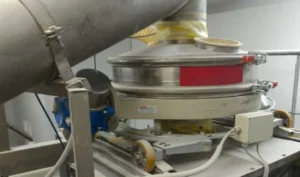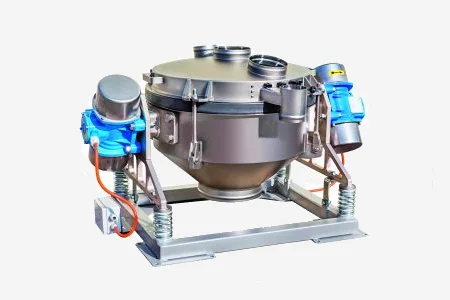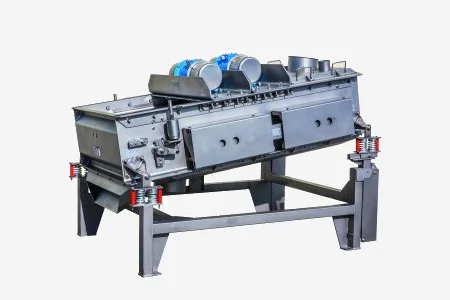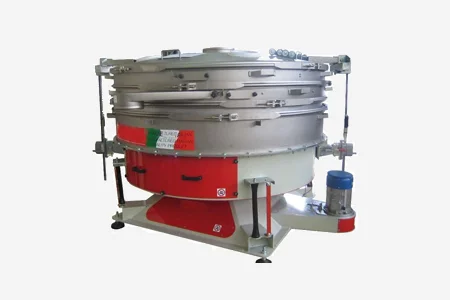HOME > Products > Separation, Screening and Sieving > Safety Sieve
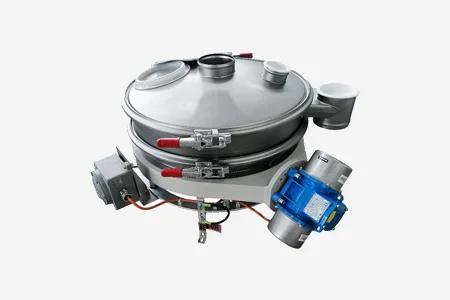
Safety Sieve | TIERMAX
Safety Sieve
Safety Sieve uses single frequency technology for screening (traditional vibration technology). Safety Sieve meets the needs of all most common sieving applications, both referred to powders (safety / check screening, classification, dedusting) and liquids containing solids (dewatering applications).
Here is a short and handy guide to sieving tasks and equipment in bulk handling and solid/liquid separation processes.
In these processes, sieving equipment can be applied to:
– Improve product quality for the next process
– Clean the product from foreign particles (coarse or fine)
– Classify good product from waste or into specific groups for different uses
The task here is to clean the product from foreign particles, also called SAFETY SIEVE.
Safety sieving means:
To sieve with 1 deck only
To expect an oversize volume max 3%
To sieve at a cut point between 0.8 and 10 mm max
To sieve as quick as possible: the product flows in the center only
Our solutions for safety sieves:
Safety sieve for powder and granules
Safety Sieve under silo
Safety Sieve under big bag emptying station
Safety Sieve under sack discharging
Safety Sieve at the outlet of pneumatic loader
Sieving at the outlet of screw conveyor
Inline-sieving with pneumatic conveying
Solid/Liquid separation or filtration
Safety Sieve
A safety sieve, also known as a safety screen or safety screener, is a crucial equipment used in various industries to ensure product quality and protect downstream equipment from contaminants. It is designed to separate oversized or undersized particles, impurities, and foreign materials from bulk solids or liquids, ensuring a safe and consistent product.
The safety sieve consists of a vibrating or gyratory screen deck with mesh or perforated panels. The material to be screened is fed into the sieve, and the vibration or gyratory motion helps to distribute and separate the particles based on their size.
One of the main purposes of a safety sieve is to remove oversized particles or lumps that can cause blockages or damage downstream processing equipment. By eliminating these larger particles, it prevents equipment breakdowns and production interruptions, ensuring smooth and efficient operations.
Additionally, the safety sieve helps to remove undersized particles or impurities that can compromise the quality and performance of the final product. It ensures that only particles within the desired size range pass through, improving product consistency and meeting quality standards.
The safety sieve can be customized to meet specific industry requirements, such as different mesh sizes, material options, and construction materials. It can be integrated into existing production lines or used as a standalone unit, depending on the application and production needs.


